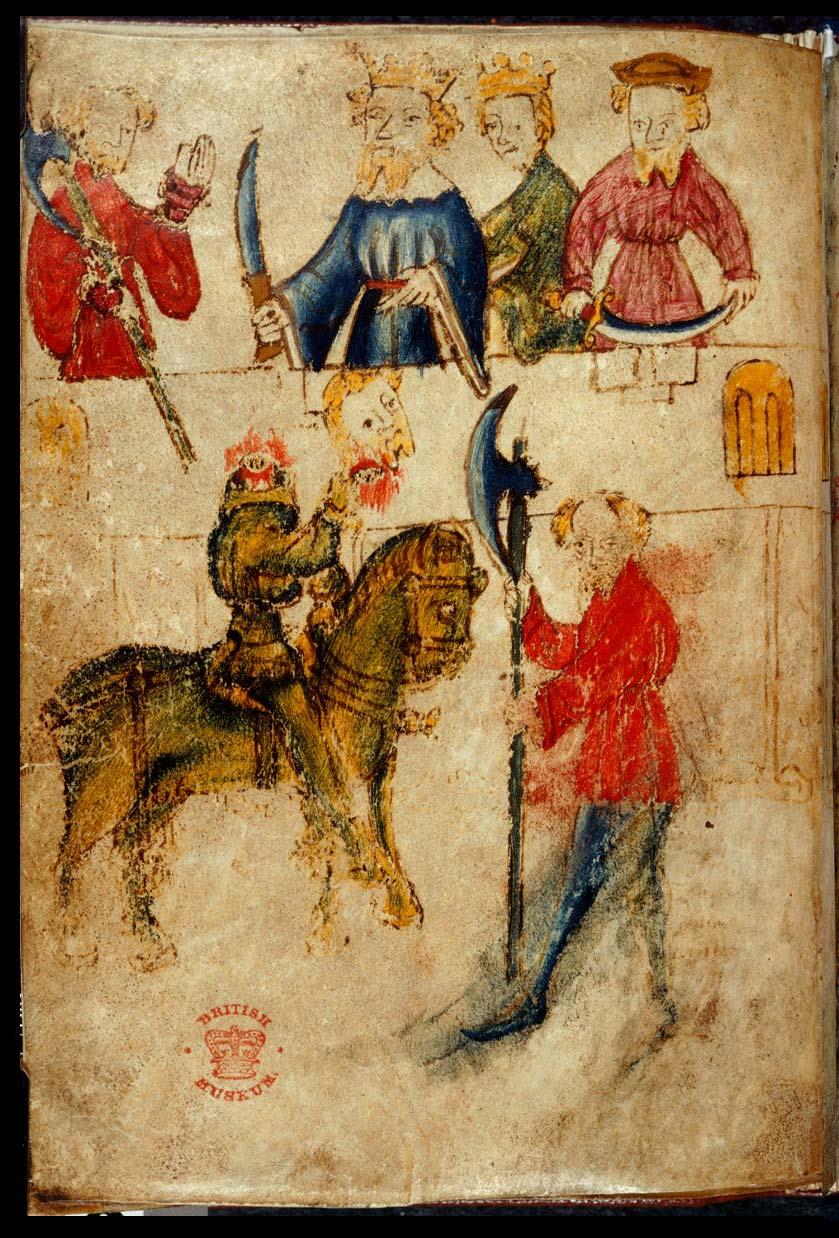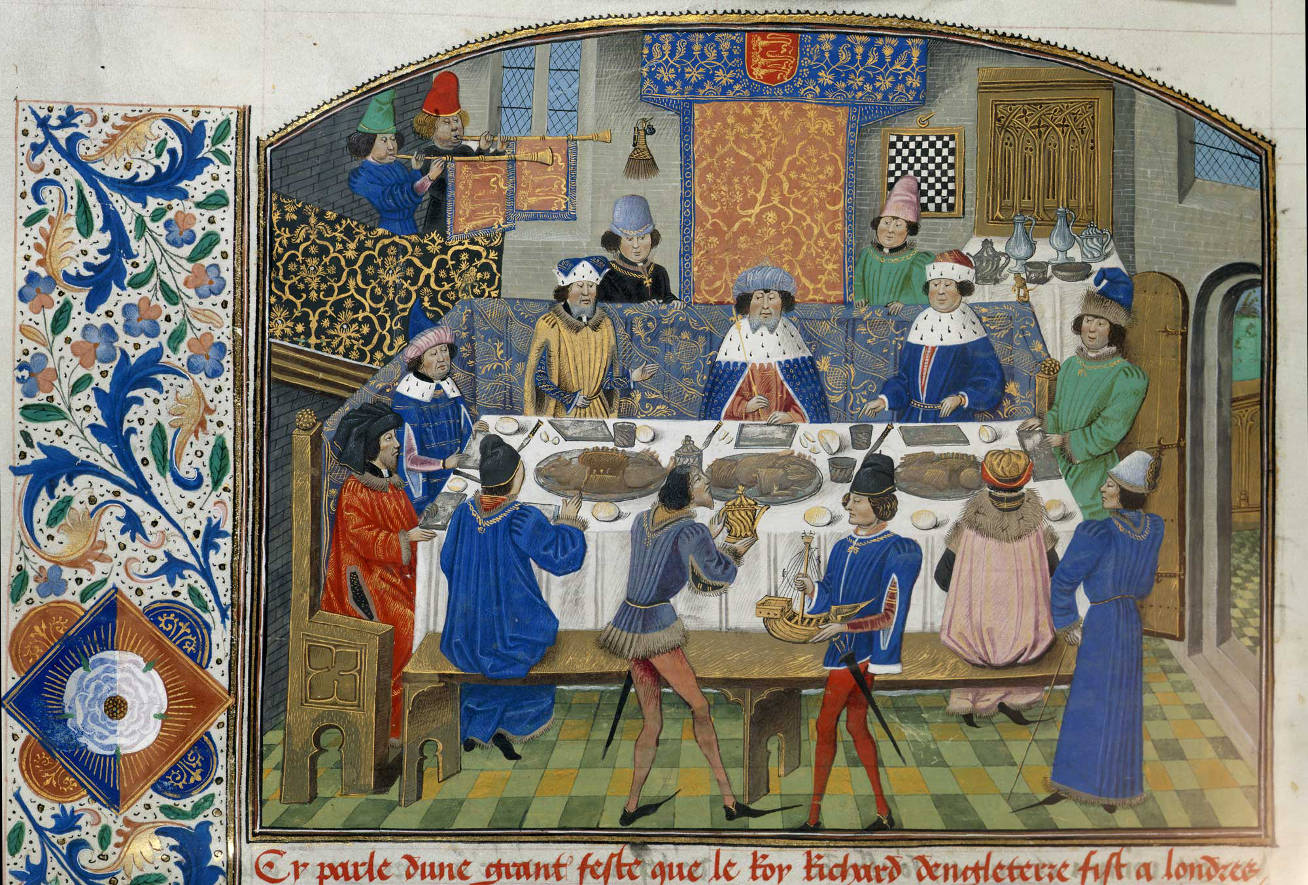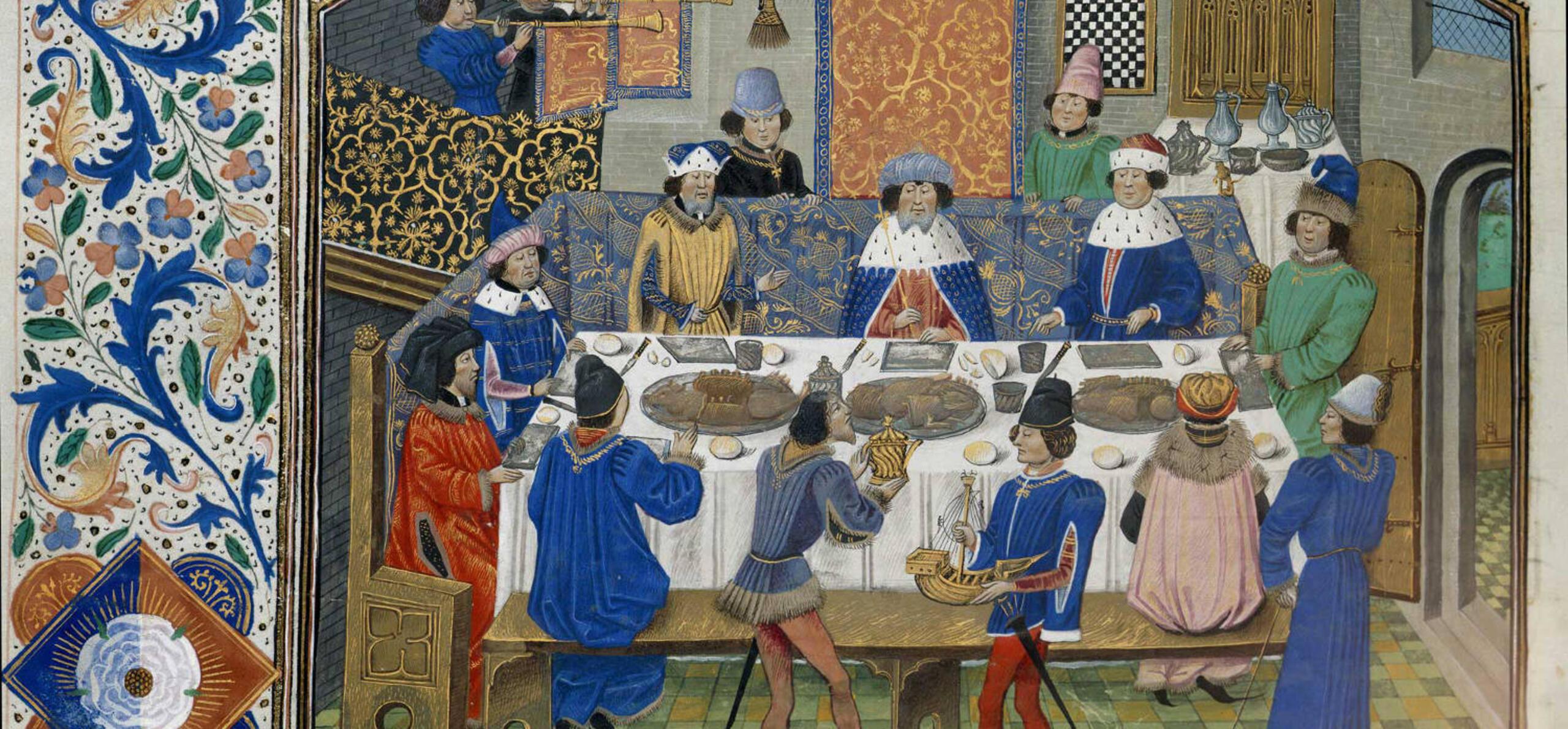By Professor Anne Lawrence-Mathers, Department of History at The University of Reading
Christmas holidays in the Middle Ages
In Reading and across medieval England, Christmas was celebrated with a full twelve days of holiday. This extended festival was marked by plenty of eating, drinking and playing as well as churchgoing. However, gift-giving played a much smaller role than it does in our Christmas today.
As early as the 10th century, an Anglo-Saxon poem recounted the key points of the festive season: ‘Christ was born at midwinter [the winter solstice], eight days before the Roman New Year of 1 January. Five days after New Year [6 January] came Christ’s baptism, known as Twelfth Day in England’.
For the schoolboys studying in Reading’s grammar school, the holiday was a time of freedom from the rigours of learning, illustrated in the image below.

(BL Ms Burney 275)
Such an extended holiday period made it possible to play games outdoors during what were usually working or studying hours. A 14th-century painting from Trento, Italy depicts a snowball fight, and similar happenings occurred in Reading.

Image copyright Trentino Cultura
The Feast of Fools
Church records in the late Middle Ages mention a Feast of Fools on 1 January which involved dressing up, cross-dressing, and misrule! Senior clergy were expected to give way to their juniors, who could get carried away. Complaints are recorded from Wells, Exeter, Lincoln, Canterbury and York about the ‘outrageous’ behaviour of clerics during this feast. Some apparently celebrated mass wearing terrifying masks, while others dressed up as women and burned old shoes instead of incense. They even ate black pudding at the altar. This theme of going to extremes in eating, drinking and rule-breaking characterises Christmas in many medieval sources.
Preparations
This illumination from a Book of Hours shows freshly-tonsured monks singing in choir. A tonsure is the name of the hairstyle adopted by monks, where some or all of the hair on the scalp was shaved as a symbol of religious devotion or humility.

Copyright Glasgow University Library (Ms Gen 288)
In contrast, Advent Sunday, the fourth before Christmas, opened a period of fasting which peaked on Christmas Eve, when sleep was also in short supply due to the night-time and early-morning services which saw in Christmas Day itself. For the monks of Reading Abbey, fasting would be strictly observed, and special care was given to their health during this time. The Advent season was also marked by the shaving of their tonsures.
The fast was less arduous for the townspeople of Reading, who did not have to fast every day. However, this time would see some careful checking of food stores, and preparations of the special items needed for the coming feast. Most households in Reading would own pigs (there were so many that special regulations about controlling them were passed). Ham, black pudding and bacon could all be on the menu.

Image copyright National Library, Netherlands
Feasting
After all these preparations, the Christmas celebrations took off on Christmas Day, with the wealthy expected to distribute festive food and drink. Perhaps especially popular was the custom that peasant farmers were freed from labour on their lords’ lands throughout the twelve days – and that the lord should lay on a feast for them. Appropriate entertainments were expected, and these featured disguise, cross-dressing, trick-playing, and a lot of drinking. An extreme version was described in the poem Sir Gawain and the Green Knight when a supernatural figure appeared in King Arthur’s court, demanded that someone cut off his head, and then issued a challenge from the decapitated head.

Copyright BL (Ms Cotton Nero A X)
Nothing so disturbing is recorded from the numerous Christmas feasts held by Henry III at Reading Abbey, although the games and celebrations are said to have been impressive. This king held court at Reading so frequently that he kept a special wine cellar in the abbey. In preparation for the Christmas feast in 1226, Henry ordered 40 salmon, ‘as many lampreys as possible’, and generous supplies of venison and wild boar. Most impressive of all is the consumption of wine. In just one year, Henry ordered 60 tuns of wine to be sent from the port of Southampton to Reading - and a tun was 256 gallons or 1,272 bottles! No menus survive from Henry’s feasts, but King Henry V’s Christmas guests were regaled with wild boar, prawns, crayfish, and eels, turbot and porpoise, roast meats, marzipan, and dates in spiced cream.
One royal delicacy at its best at Christmas time was roast swan. From the late Middle Ages, the Mayor and Guild of Reading also had rights of ownership over some of the swans on the Thames, and had special marks which were carved on the beaks of ‘Reading’ swans. Christmas feasts for the leading citizens of Reading could thus also feature swan, perhaps as in this feast recreated for the Museum of London.

Image copyright Ivan Day

Image copyright BL (Ms Royal 14 E IV)
The ceremonial boar's head
By the later Middle Ages, the bringing into the feasting hall of a whole, cooked boar’s head at Christmas had become a ceremonial event, apparently involving a procession of costumed dancers and the singing of a special song. The boar’s head was apparently symbolic since it was replaced in some locations by a wooden version in the early modern period. The ‘Goodman of Paris’ in his late-14th-century book on housekeeping says that Special Feasts included a first course of pasties, sausages and black pudding; four courses of fish, fowl and roast meats; and a final course of custards, tarts, nuts and sweetmeats. Sadly, while flans, tarts and pastries abound in his lists of recipes, there is nothing equating to a fruit cake!





